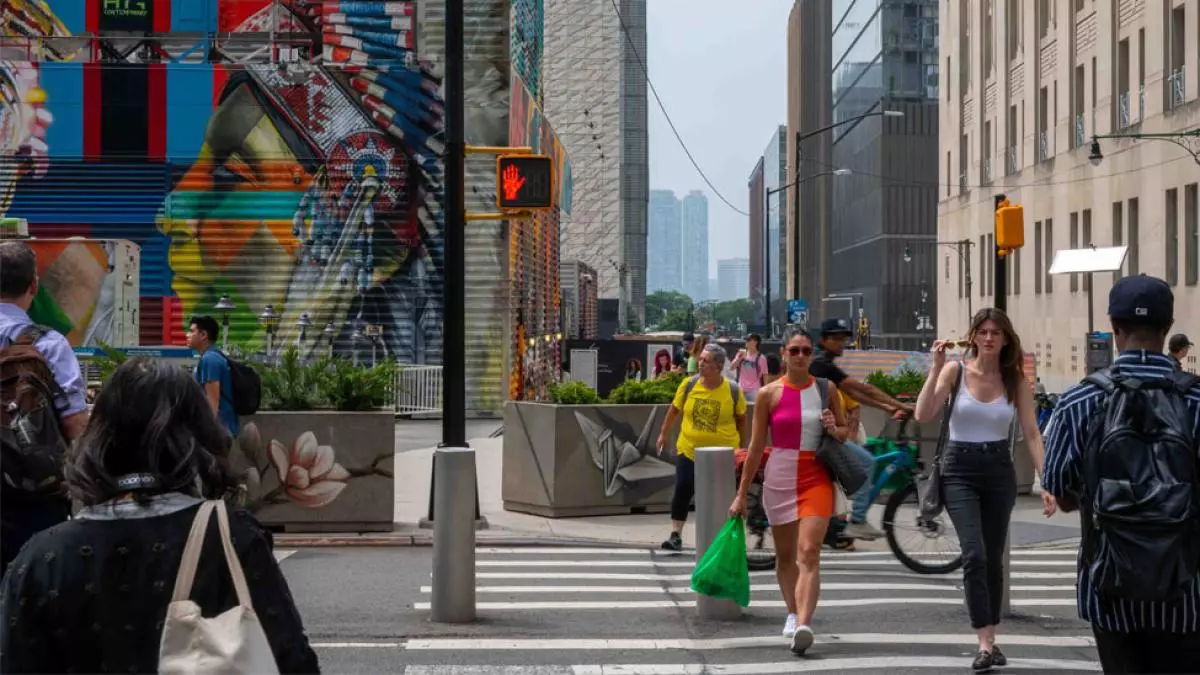
The Ground Beneath Our Feet is a place-based, experiential humanities research and curriculum initiative at Pace University dedicated to empowering our students to connect the achievements and injustices of the past to their own lived experiences in New York City and beyond.
Pace University was founded in 1906 in Lower Manhattan, emerging from the same unceded Lenape land as American democracy itself. It shares acreage with the unnamed remains of enslaved and free Africans in the African Burial Ground and the grave of Alexander Hamilton in Trinity Churchyard. Our main buildings also reside on the stretch of Park Row that was known at the end of the nineteenth century as Newspaper Row, whose residents included the New York Sun, New York Tribune, New York World, and New York Times.
Over centuries, this area has seen the appropriation of Indigenous lands, human enslavement and trafficking, the formation of Chinatown in the context of the Chinese Exclusion Act, multiple pandemics, and terrorism. The same area contained sites of extraordinary resistance and accomplishment, including the formation of essential stops on the Underground Railroad, and the founding of schools that became models of public education, such as the African Free School and the Cuban exile-led La Liga de Instrucción. In the nineteenth century, a diverse multi-ethnic and multilingual print culture centered here. It included the first Black-owned newspaper in the United States, Freedom’s Journal. As the city’s Anglophone Black press expanded, so too did an influential Spanish-language press with hemispheric reach–including an illustrated magazine called La América Ilustrada (Illustrated America), which rented space from the New York Times in the building that now houses Pace University’s Dyson College of Arts and Sciences.
Now looking across our campuses in New York City and the Lower Hudson Valley, the Ground Beneath Our Feet brings together students, faculty and community partners to uncover stories that illustrate sites, people, and events of our neighborhoods’ Black, Indigenous, and people of color (BIPOC) and LGBTQIA+ histories.
We believe that the stories that unfolded on the ground beneath our feet that have gone largely untold are foundational to United States history and culture. These stories chronicle both achievement and trauma–and their telling can help to advance reparative justice and reconciliation.
Leadership Team
- Maria Iacullo-Bird, Assistant Provost for Research, Clinical Associate Professor of History, and Executive Director of the Center for Undergraduate Research Experiences (CURE)
- Kelley Kreitz, Director of Experiential Learning, Associate Professor of English
- Sid Ray, Professor and Co-Chair of English
Lower Manhattan Humanities Consortium
- Sylvia Kollar, Director, Municipal Archives, NYC Department of Records and Information Services (DORIS); Lead community partner in NEH Humanities Initiatives Ground Beneath Our Feet project
- Robina Taliaferrow, Director of Community Engagement, Billion Oyster Project
- Rick Akin, Director of Volunteer Services, Bowery Residents’ Committee
- Rob Wilson, South Street Seaport Museum
- Martina Caruso, Curator, South Street Seaport Museum
- Marissa Maggs, Archivist, Trinity Church Wall Street
Faculty Partners
- Tim Anderson, Adjunct Professor of English
- Sarah Blackwood, Professor of English
- Beatrice Chen, Adjunct Professor of American Studies, Executive Director, Immigrant Social Services
- Sarah Cunningham, Art Gallery Director, Clinical Assistant Professor of Art
- Chris Campanioni, Lecturer in Engilsh
- Ty Defoe, Writer-in-Residence
- Lisa Farber, Assistant Professor of Art History and Art History Program Coordinator
- Misty González, Adjunct Professor of English
- Alysa Hantgan, Lecturer in English, Writing, and Cultural Studies
- Lisa Hickman, Adjunct Professor of Performing Arts
- Stephanie Hsu, Associate Professor of English, Director of American Studies
- Erica Johnson, Professor of English
- Gabe Levine-Justicia, Pace Instructor of English Composition and Latinx studies
- Tamara Kelly, Director, Office of Communications and External Relations and Adjunct Faculty
- Joseph Tse-Hei Lee, Professor of History and Executive Director of the Global Asia Institute
- Brenda McManus, Associate Professor of Graphic Design
- Meghana Nayak, Professor of Political Science and Chair of Women’s and Gender Studies
- Marcella Szablewicz, Associate Professor of Communication and Media Studies
- Emily Welty, Professor and Director of Peace and Justice Studies
Student Researchers
- Daniel Rojas, Hurricane Sandy Archive
- Lindsay Elizabeth Paul, “Self-Published Women: How Anaïs Nin’s Personal Printing Press Popularized Feminist Writing in the United States”
Funding Partners
We are grateful for the funding that we have received to support this project from:
- National Endowment for the Humanities (NEH)
- Pace University Student Technology Fee Fund
- Pace Center for Undergraduate Research Experiences (CURE)

